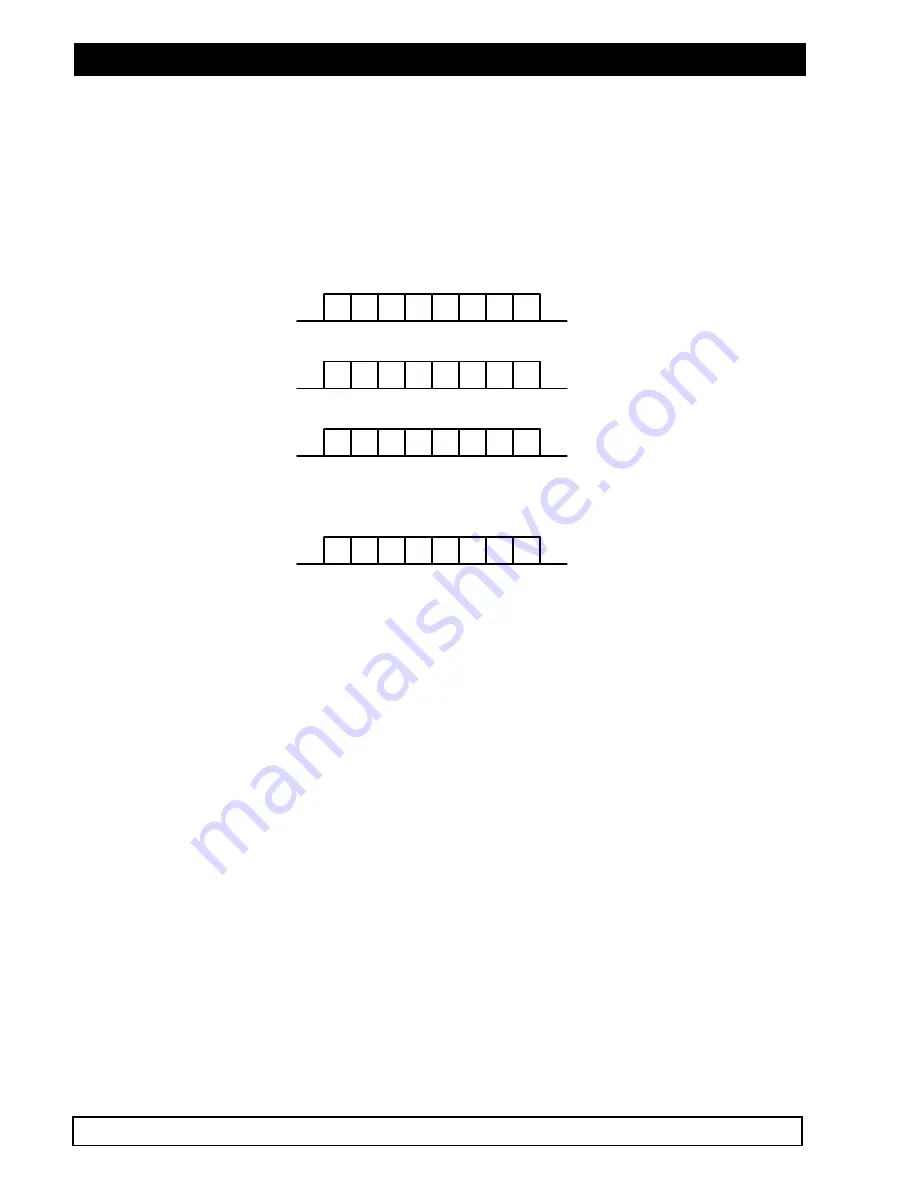
SW-D7000U, 9CH. COLOR VIDEO MULTIPLEXER
12 JVC PROFESSIONAL, IMAGING PRODUCTS
(TDM). Time base correction is performed during digital capture and so input cameras need not be
synchronized.
The order in which the fields are captured from the different input cameras is controlled by an operator-
programmed RECORD LIST, which can be automatically modified by the system in the event of alarms or
motion detection. The multiplexed video fields can then be recorded onto a single VCR via the VCR output
connector.
Example:
3 multiplexed inputs:
A1 A2 A3 A4 A5 A6 A6 A7
B1 B2 B3 B4 B5 B6 B6 B7
C1 C2 C3 C4 C5 C6 C6 C7
Input:
Camera A video fields:
Input:
Camera B video fields:
Input:
Camera C video fields:
A1 B2 C3 A4 B5 C6 A6 B7
Output:
Multiplexed video stream to VCR
etc.
etc.
etc.
etc.
In addition to the video content sent to the VCR in each field, a packet of digital data that uniquely identifies
the field is inserted into each field sent to the VCR. (This packet data is not visible in the normal video and is
used in the Playback mode to recognize incoming fields and to link them back to the original camera input
from which they were captured.)
Besides the camera number, other status information stored in this packet of digital data includes time and
date, camera status, camera title, selected record time mode information as well as system and alarm status
at the time of recording. This status information is rebuilt and displayed with the corresponding camera
during Playback. On Playback the operator can select one of several screen formats for display, and can
also choose which cameras to display in which position in a multi-screen.
NOTE:
The
SW-D7000U will
NOT
set the VCR speeds which must be set up separately on the VCR.
How Playback works:
When Playing back multiplexed recordings which were originally recorded from a
SW-D7000U
compatible
multiplexer, time stamped video fields are received from a VCR connected to the VCR input connector or Y/C
input on the
SW-D7000U's
rear panel, each field being uniquely identified by its own digital data packet.
These embedded digital data packets are decoded, and the video field is linked to its original input camera.
The operator can select which cameras to display during Playback, and so the video field for that camera is
displayed (or skipped) according to the operator's Playback selection. All the associated status information,
including titles, time and date of recording, as well as the alarm or video loss status of the camera is
reconstructed from the digital data packet and displayed as on-screen text during Playback. Because the
on-screen text is re-constructed and generated for on-screen display (as opposed to being recorded on the
VCR as part of the video display) the operator is assured of very clear and legible status and titles during
Playback.



























